Features of planting astilba

Perennial herb astilba is a rhizome member of the saxifrage family. Gardeners prefer to plant them on their plots for their decorative curly look, lovely inflorescences and feathery leaves.
The right time
Astilbe is often planted in open ground no earlier than in May, so that the earth is already sufficiently warm. It does not matter whether the roots are planted with renewal buds or seedlings are planted. It is recommended for beginner gardeners to start planting in June. In principle, you can plant a perennial plant in the summer, but not in the heat. Most often this is practiced in spring and autumn, depending on when it happened to get planting material.
The plant comes in different varieties and grows from 8 centimeters to 2 m in height. Depending on the variety, white, pinkish or lilac flowers appear on the branches of the flower culture. Flowering begins with the arrival of summer and lasts actually a month. Shades of peduncles vary in variety from vanilla, milky and nude to juicy scarlet and pink. They exude a pleasant aroma reminiscent of bird cherry.
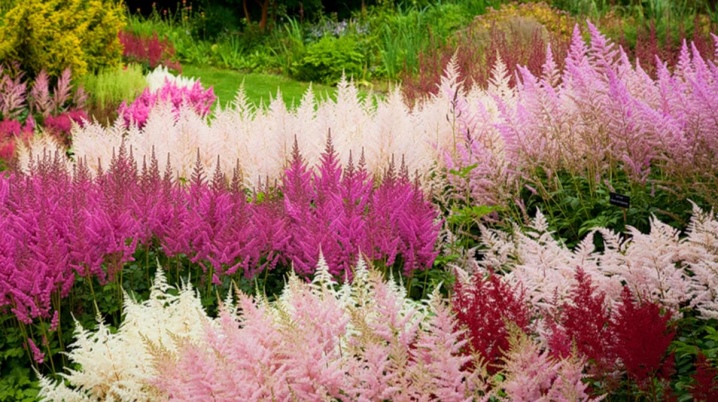
There are 200 varieties of perennials of Asian origin. The dwarf variety "Lilliput" and the tall hybrids of Arends are especially worth highlighting - the species to which all plant varieties cultivated today belong.
When starting to plant plants, it is important to take into account the quality characteristics of the planting material. For 100% survival of the culture, certain requirements must be observed for the rhizomes intended for planting. They should be free of dead or rotten parts. Drying of rhizomes or their waterlogging is unacceptable during storage.
Young shoots should be chosen neither elongated, nor bent or crumpled. Probably, defective shoots will also take root, but, most likely, the plant will lose its decorative effect, and, possibly, it will be sick for a long time.
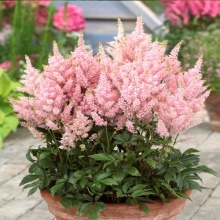
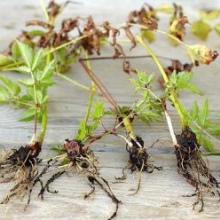
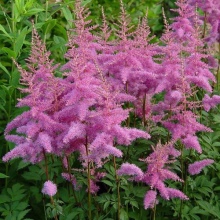
In the cold season, the herbaceous part located above the ground dies off. The arrival of spring revitalizes the root system, which is accompanied by the appearance of new shoots. An interesting distinctive feature of a perennial is the growth of rhizomes from above. The formation of buds on the upper parts of the root leads to the necessary manipulation - to fill up the earth every year.
Astilba grows annually, but the appearance of fresh roots leads to the death of the lower part of the plant. The perennial flowers are distinguished by their large size - 10-50 cm long. After the shrub has faded, capsules with seeds are formed on it.
For greater convenience in the growing process, it is desirable to use tall varieties, the height of which can reach 80 cm. These varieties are distinguished by high viability and good tolerance to temperature changes.

Site selection and soil preparation
The correctly chosen place and period for planting guarantee the quick survival of astilbe. How quickly a plant grows depends on factors such as heat and humidity. When planting, you need to take into account the growth of plants of different varieties. The tall ones are planted 50 cm apart, between the low ones, a distance of at least 30 cm must be observed.
Landing is carried out in pre-dug ground. It is important to extract the rhizomes of weeds from it, and fertilize astilba with compost.
Peat and manure are suitable as fertilizers (a couple of buckets per 1 sq. M).
It is important to know that flowers do not take root well in areas where there is a high level of groundwater or there is stagnant water... Most often, the rhizomes are soaked and vythayut. If there is no other placement of the planting, you will have to take care of reliable drainage. But if its arrangement is impossible, it is worth choosing a place on a hill for the location of the perennial.
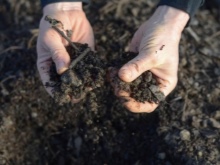
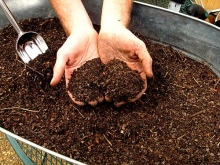
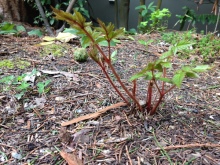
Astilbe does not need an abundance of light. Active growth and beautiful flowering can be achieved in a rarefied shade. The bright light of the sun will be destructive for her. It is advisable to plant in the shade or on the ground near the pool (pond). If coniferous bushes are planted near them, then they will not only harmonize visually, but also protect the astilba from overheating.
Although there are varieties of Astilba that prefer the sunny side. These are Gloria, Weiss Pearl, Berg Crystal and others with white and light pink flowers. Their flowering period under the open sun is shorter, but much more intense.
Planting also needs mulching (covering the soil) with bark, sawdust, straw and other things. Mulching minimizes overheating, retains moisture and soil looseness.
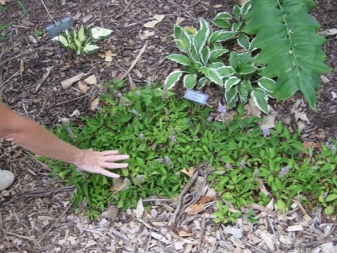
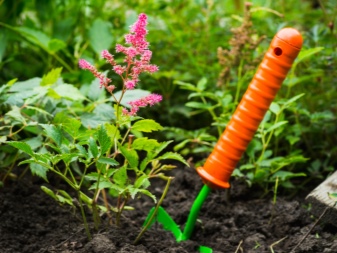
In principle, a perennial can take root on almost any land, but the plant feels especially good on loamy, fertile lands fertilized with compounds with potassium and phosphorus. If the soil is acidic, wood ash is placed in it before planting, which reduces this indicator. Dolomite flour is also suitable for this purpose.
You need to choose astilba for planting, focusing on its variety and flowering period. For early and late species, sunny and shady areas are equally suitable. Perennials blooming in the middle of summer should be planted in dark places.
Thus, astilba is just an ideal ornamental plant for decorating a plot in the country or landscaping a cottage yard.
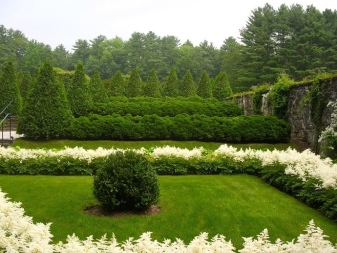
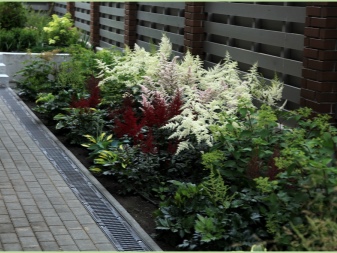
How to plant
Planting astilba in a garden or in a vegetable garden will not be a difficult process. The perennial is unpretentious, tolerates frost well and rarely gets sick. It's easy to look after him.
The depth of the planting hole is provided for each plant specifically, taking into account which rhizome is in length and volume. It should fit freely in the landing hole.
It is unacceptable to deepen the bush and cover the growing point with soil. At the bottom of the pits, you can place a hydrogel, taking care of the preservation of soil moisture. And also for this purpose ash with bone meal and fertilizers with minerals are suitable - one matchbox in a dosage.

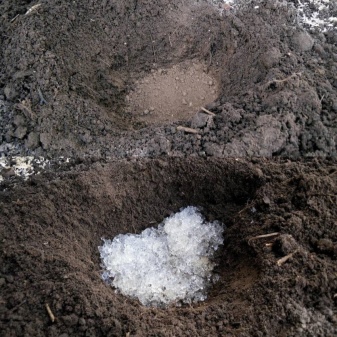
In the surface layer of the soil, the content of phosphorus and potassium in the right amount is important. For good reproduction, the soil in the beds should be treated with complex fertilizers and a couple of handfuls of bone meal.
The flower garden should be properly planted in pits no deeper than 30 cm, where the above-mentioned baits with flour and humus are poured. All ingredients are mixed and filled with water. Delenki are covered with a 3-centimeter layer of mulch.
It is allowed to mulch the soil surface with any peat crumb, which makes it possible to keep the soil evenly moist and prevent the root system from drying out in the future.
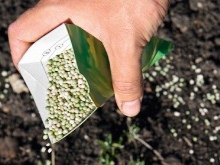

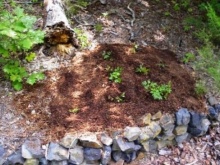
Seed propagation
To preserve the decorative and varietal characteristics of astilba, it is rarely propagated by seeds. If seeds were used for cultivation, perennials show inconsistency with the declared varietal characteristics. The brushes on such plants are low decorative in appearance, the color is atypical, the flowers are sparse, and their flowering period is unusually short. For seed propagation, only high quality seeds of varietal selection should be used.
Seeds are sown in moist soil and are not covered. To speed up the germination process, it is important to maintain high humidity (as an option, crops are placed under glass, or kept in a greenhouse). Further, the process of growing seedlings consists of watering the seedlings. It must be timely, preventing overdrying of young plants.And also the sprouts must be protected from direct sunlight, but plant them in a bright place.
Good germination performance is achievable with seedling stratification. For 21 days, seeds are poisoned to be hardened in a cold place (from +4 to - 4 ° C). Then they are sown already in the greenhouse and at t + 20 ° C. After a couple of months, young shoots will have to be transplanted into open ground. Seedlings from hardened seeds are distinguished by high survival rate and growth rates.
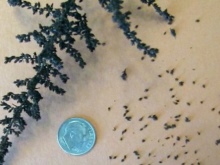

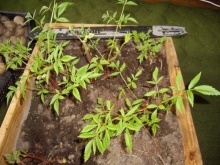
By dividing
This method is called vegetative and is considered traditional and the most reliable among flower growers. Carefully dig up the mother plant to maintain the integrity of the sensitive rhizome. Using a sharp blade, carefully divide the rhizome into several segments with 2-3 buds. Sprinkle crushed charcoal over the slices.
In a previously prepared furrow, at some distance from each other, spread the planting material, and moisten the soil. Obvious results when planting divisions are achieved on root formation stimulants. The process of caring for sprouts consists of regularly watering the soil and loosening it.
Planting of cuttings is carried out from early spring, starting in March. The described breeding method involves the flowering of astilba with the arrival of autumn.
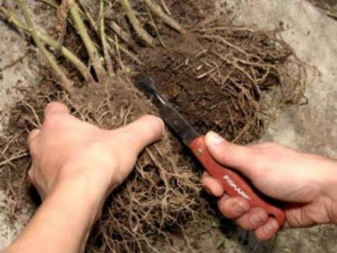
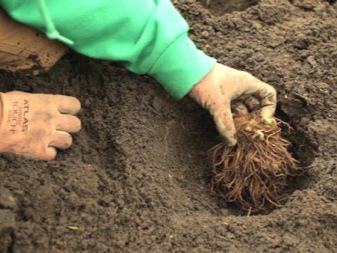
By kidneys
You can quickly propagate a perennial plant in the spring, using division by buds. Use a sharp blade to separate the areas with renewal buds. Plant the cuttings in a greenhouse with moistened soil, mixed with sand (coarse) or gravel, and cuts sprinkled with ash in advance. This breeding method marks the excellent survival rate of fresh shoots. The only drawback is that it is necessary to wait about a year for a full-fledged plant.

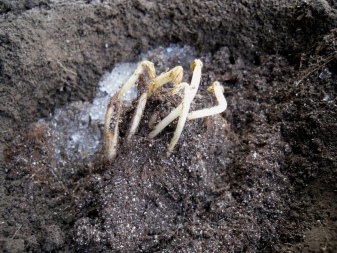
Astilba is attractive not only by its decorative effect, but also by the fact that it is practically not susceptible to attack by pests and diseases. The root system of some crops is rarely affected by rootworm nematodes. These small pests are not afraid of antiparasitic drugs, therefore, in order to exterminate it, you have to destroy the infected bushes. Moreover, part of the soil in contact with the roots of the diseased plant is also subject to removal. It is undesirable to plant plants at the site of infection for several years.
Another parasite that threatens death is the slobbering penny. Infected astilba slows down leaf development. The method of prevention can only be the collection of insects from the leaves of the bush by hand.
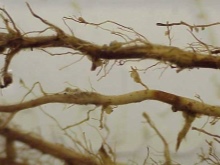
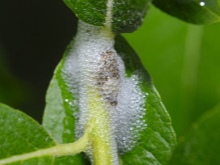
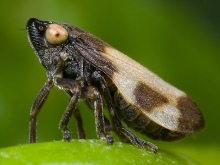
Further care
It is not difficult to take care of decorative astilba. The plant is very moisture-loving - watering should be done as often as possible. Even if you allow the soil to dry out for a short time, this can negatively affect the decorative properties of the plant when it blooms. Perhaps wilting of leaves, the appearance of smaller inflorescences, untidiness of the general appearance of the shrub.
During the year, astilbe shrubs give an increase of up to 3-5 cm. Caring for the plant is the timely filling of fertile soil under the bare roots. The soil layer is approximately 3 cm.
Cultivation of plantings requires maintaining sufficient soil moisture
It is necessary to have mulch (peat, expanded clay, pieces of bark or special landscape crushed stone) on the soil layer. In winter, such a cover protects sensitive rhizomes from freezing.
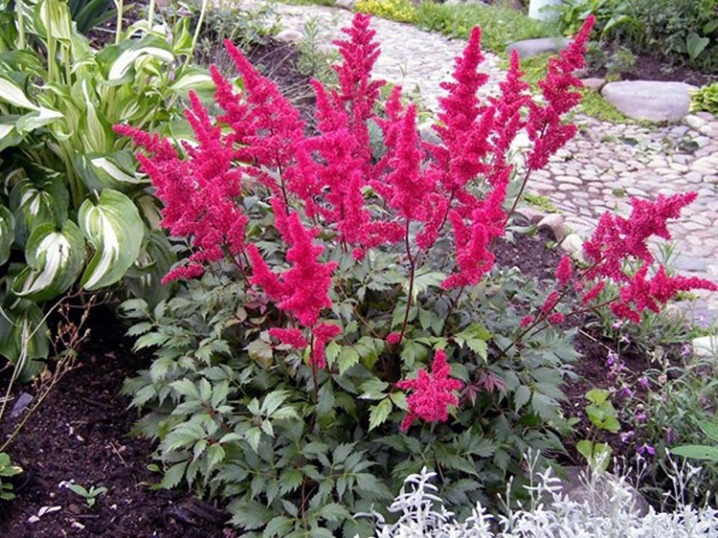
Timely watering and providing moisture in the soil guarantees a healthy plant and excellent decorative characteristics of the species when the shrub blooms. After the attractiveness of the bush is maintained by periodically cutting off dead stems and removing inflorescences that have withered after flowering. This is especially important when astilba is part of the landscape design.
In order for the plant to develop fully, it is necessary to regularly use fertilizing from complex fertilizers. Since without a transplant, a shrub can live in a permanent place for more than 5 years, and with the arrival of spring it is important to reinforce it with nitrogen fertilizer.It promotes the early regrowth of fresh foliage on bushes that have survived the winter.
It is necessary to take into account the fact that astilba has perfectly adapted to the Russian frosts, but the changeable temperature in spring can have a detrimental effect on the decorative culture.
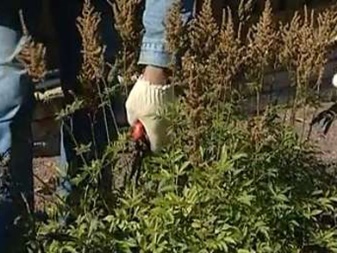
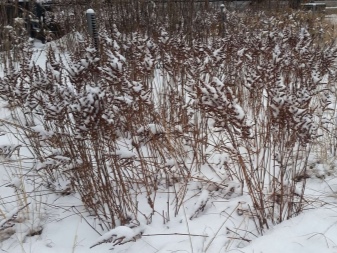
During this period, it is important to take care of the wintering of the shrub, covering it with several layers of spruce branches on top. It is desirable that the soil between the bushes be covered with pine needles.
To preserve the attractiveness of astilbe, annual feeding is introduced. With dry soil, it is preferable to use compost or peat, with wet soil - complex additives, and after flowering - phosphorus-potassium mixtures.
On average, the life expectancy of the astilba shrub is 5 years. Then the plant is transplanted. It is permissible not to dig out the whole shrub, but to separate only a part, sprinkling the cut with ash and filling the resulting space with a fresh portion of soil.
During flowering, astilbe needs phosphorus feeding, and by the end of flowering, the introduction of fertilizer with potassium. Thus, the flowering period is extended, it becomes more luxuriant, full-fledged seeds are formed.
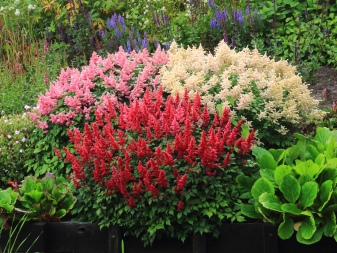
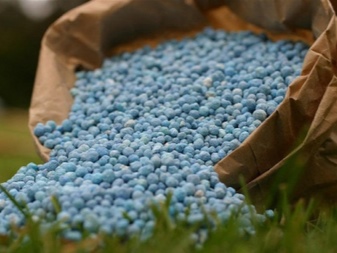
Combination with other plants
When creating landscape design, astilba of hybrid varieties is also widely used. Plants are distinguished by the compactness and splendor of the brushes at the time of flowering. Planting near other flora samples makes it possible to set off plain green lawns and conifers with blooming astilba. The proximity to conifers provides flowering shrubs with a reliable shield from the sun.
The combination of plants with different color shades adorns large-scale planting areas in parks. It looks interesting on the Astilba Thunberg flower bed, with drooping brushes with yellow or pink flowers uncharacteristic for her.
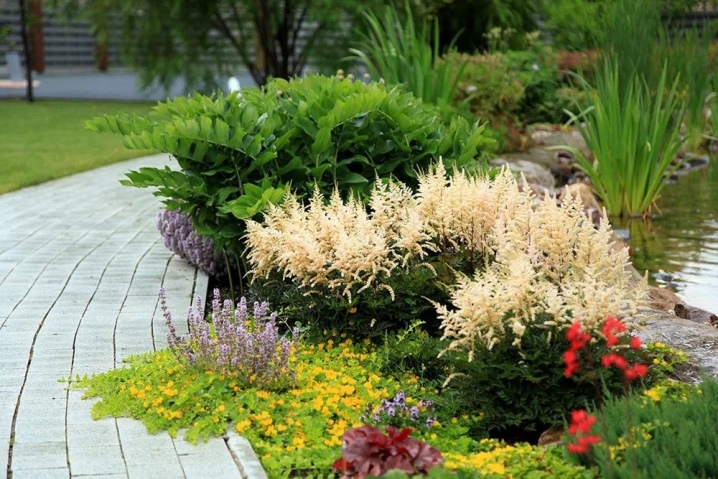
Planting early-flowering astilba allows you to beautifully decorate the landscape in the off-season. Astilbe of the Japanese variety demonstrates a wide range of tones in a white-pink palette. It is a highly decorative type of shrub.
To determine the height of the plant, you need to understand where it is supposed to be planted. If in the background in a flowerbed or under a fence, then a higher variety is preferable, for example, "Amethyst". When creating a flower garden, you need to take into account the shape of the inflorescences. It differs markedly in different varieties of astilba.

How to plant astilba and take care of it, see the video.







































































































The comment was sent successfully.